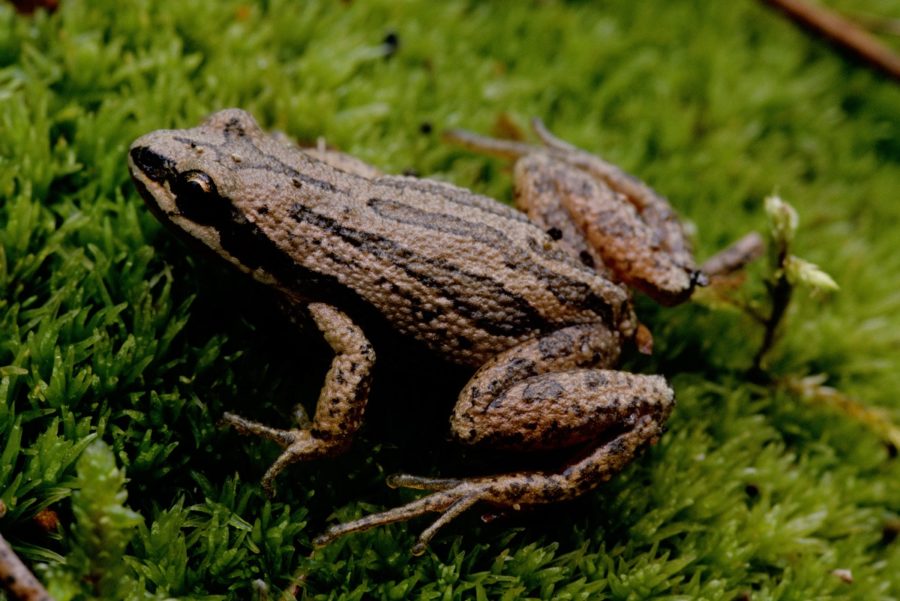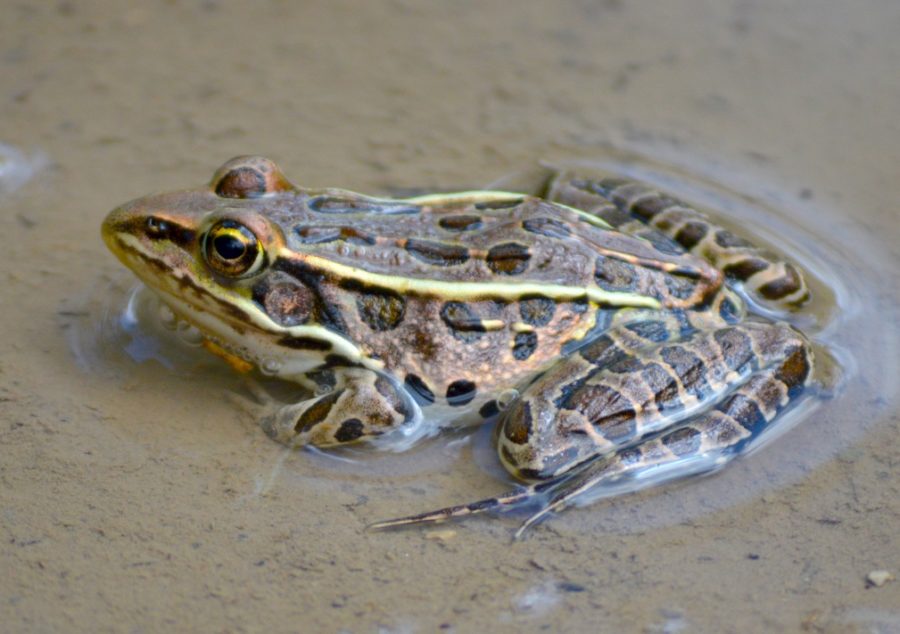The late winter wait for spring can be almost painful. I’ve had enough of the cold, snow, and hibernating wildlife. When can I go outside without a jacket? Disappearing snow, robins on the lawn might be enough for some, but not for me.
Then finally…yes! I hear it: rrrrRRRRT, rrrrRRRRT, rrrrRRRRT!
The Presqu’ile Provincial Park pannes have come through once again with my first real sign of spring — the calling of the Chorus Frogs.
A declining species, but Presqu’ile’s pannes have always held a good population.
At least, it sounds like they do.
Every spring, usually starting around April 1, the pannes are filled with the sound of the Chorus Frogs singing. But they are notoriously hard to see, staying hidden throughout the year. The pannes are like that, though.
Understated, often overlooked, but oh so very special.
A special place
Pannes are low areas between sand dunes, also called dune slacks or coastal meadow marshes. To be fair, they don’t look like much; flooded in the spring, and by summer (when most people visit), they look like dry, old fields.

Most visitors drive by them between the gate and the campground with barely a glance, or perhaps just to take note of the access roads to the beach.
But that is all panne!
Pannes through the seasons
Fall will bring a patch of colour with a unique wildflower display, but late fall and winter fill the pannes with water and they freeze solid until warmer temperatures once again unlock them and the frogs sing.

This range of conditions makes it a tough place to live, and the plant assemblage that has adapted to live here is quite unique.
Indeed, so special and rare are pannes on fresh water that the habitat is considered one of the rarest in Ontario. In fact, it’s considered rare in the world, and is Presqu’ile’s most globally significant habitat.
Spring may be when the pannes shine the most. Because they dry out every summer, they cannot support fish populations and this is a good thing for a number of species of frogs and aquatic insects.
Fauna of the pannes
Fish are voracious predators that eat tadpoles and aquatic insect larva, so some species just can’t survive in water pools with fish.
That is why the spring-only vernal pools in forests are so important for some frog, salamander, and insect species.

But while vernal pools may be up to a couple dozen square meters in size, the pannes are huge with hundreds of square metres.
More water = more life.
Chorus Frogs, Spring Peepers, Leopard Frogs, Gray Tree Frogs, Wood Frogs, and American Toads can all be heard singing from the pannes in April.
Most sing at night, but the Chorus Frog sings during the day, making it the most noticeable and a favourite sign of spring.
Plucky panne predators
Even though fish are not present, there are predators in the pannes.
And again, these are small and often overlooked.
Predacious diving-beetles and dragonfly larva are all stalking the spring pannes looking for tadpoles and each other to eat.

The biggest predators, however, are turtles.
They make the trek from the deeper water of the marsh where they have over-wintered to the pannes to feast on tadpoles. The Blanding’s Turtle is a tadpole specialist and loves our pannes!
A big threat to our wildlife in the pannes
The trouble here is: to get to the pannes, the turtles must cross our main road.
While we have installed tunnels along part of that road to help turtles, some parts of the road are too low and the pannes too flat and wet for tunnels.
The only solution is for people to be careful when they drive through the pannes. They are not lifeless old fields, but globally unique places, full of life.

So please drive carefully, and if you are ever here in early spring, listen for the first sign of spring’s sweet return: rrrrRRRRT, rrrrrRRRRT, rrrrRRRRT!
